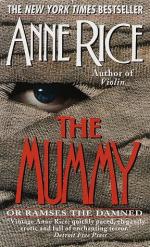|
This section contains 184 words (approx. 1 page at 300 words per page) |
A near-perfect synthesis of Dracula and Frankenstein, the mummy is a supernatural (as opposed to a medico-scientific) representative of the "living dead" class of horror film monsters. Acclaimed cinematographer Karl Freund (Metropolis, Murders in the Rue Morgue) made his directorial debut with Universal's The Mummy (1932), otherwise known as Cagliostro and Imhotep. Originally conceived as a vehicle for Boris Karloff, screenwriter John Balderston (Dracula) rewrote the film after the 1931 discovery of King Tut's tomb. Accidentally brought back to life when some archaeologists read from a sacred Egyptian scroll, the mummy (Karloff) goes on a mission to claim the soul of a young Englishwoman who turns out to be his beloved but forbidden princess reincarnated. Attempting to thwart him is Doctor Muller (Edward Van Sloan, reprising his role as Van Helsing in Dracula). At least ten Mummy spin-offs, even more zombie movies, and an Anne Rice novel have since followed.
Further Reading:
Rice, Anne. The Mummy, or Ramses the Damned: A Novel. New York, Ballantine Books, 1989.
Twitchell, James B. Dreadful Pleasures: An Anatomy of Modern Horror. New York, Oxford University Press, 1985, 260-264.
|
This section contains 184 words (approx. 1 page at 300 words per page) |


